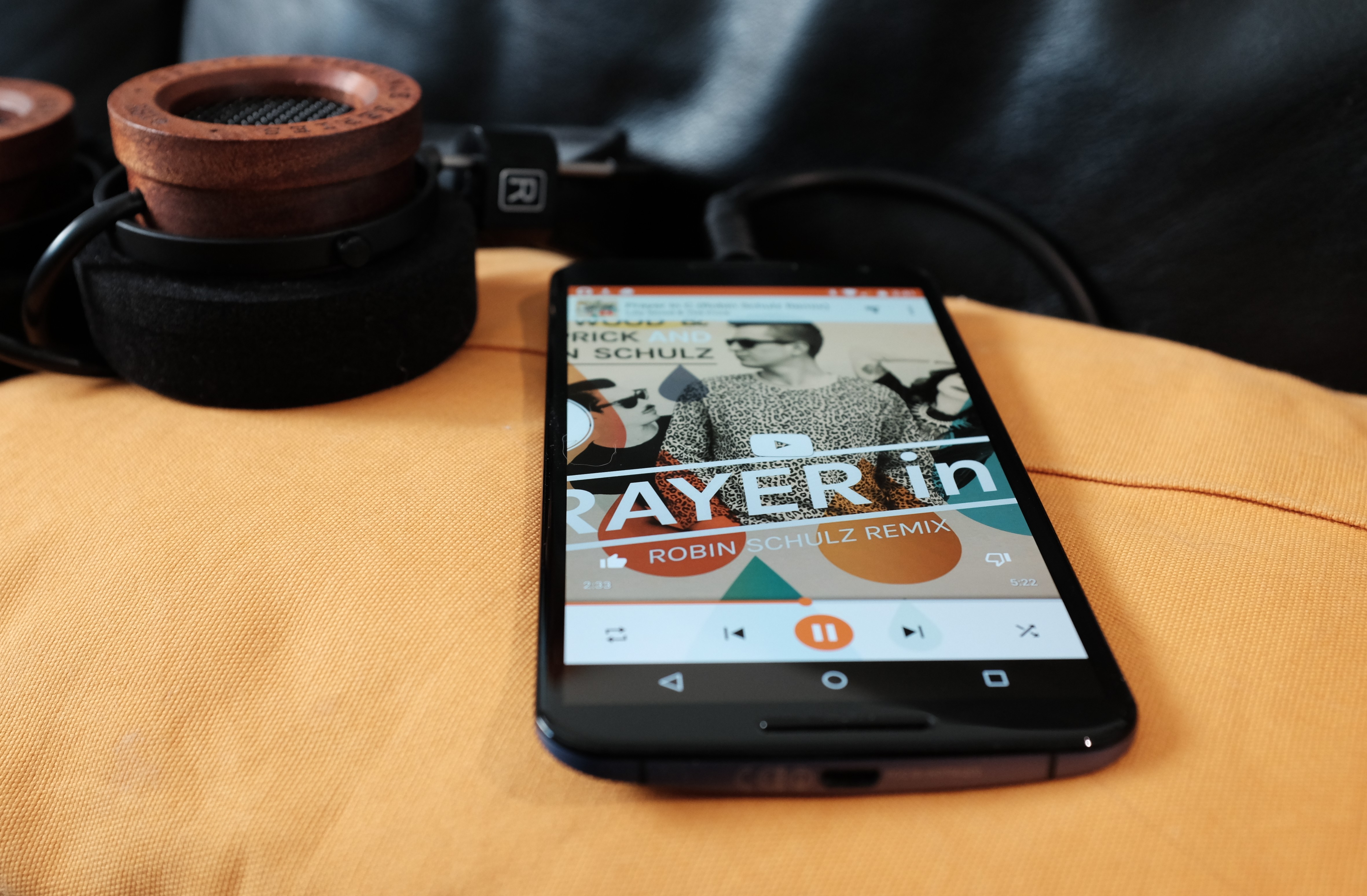While no geek, I still appreciate good tech. Nexus 6 and Grado Labs RS1e headphones are two of my four best acquisitions made since summer 2014, and both will be reviewed—ah, someday soon. The others: Fujifilm X100T used to take the above photo and Chromebook Pixel LS received two days ago.
Too often, the measure of quality cans is classical music. Bah! Modern headphones should encompass a complete tonal range—not just the highs of the great dead composers’ violins or the lows from the thumping bass preferred by the Beats generation. Fullness and roundness are exactly what the RS1e deliver to my aging ears. Today, I listened to a song surprisingly showing the headphones’ tonality, streamed from Google Music to, yeah, the N6.
Robin Schulz remix of “Prayer in C” by French duo Lilly Wood & The Prick delights my ears. Typically, a remix like this would be too bassy, but not on the Grados. Just the opposite is true. When listened to straight, with equalizer off, the tune teases from the RS1e fabulous presentation of highs and lows along with fantastic soundstage. (I love the music video, BTW.)
Bass boomers will likely never love these open-ear cans, but anyone who relishes the finest details and aura of presence—”Hey, I can hear guitar here and the drums over there!”—certainly should. But the real magic is how good compressed, streamed music can sound with the right music player and connected cans. Audiophiles can have their systems costing tens of thousands of dollars. My Grados and Nexus will do just fine.
[youtube=https://www.youtube.com/watch?v=JrlfFTS9kGU]
As for the photo, it’s straight from the X100T but slightly cropped to remove the pillow’s edge. The Classic Chrome film simulation is applied in the camera. Over on my Flickr, you can see two outtakes, because I shot the wrong song art, and a HDR edit that probably will top my eventual review of the camera.
